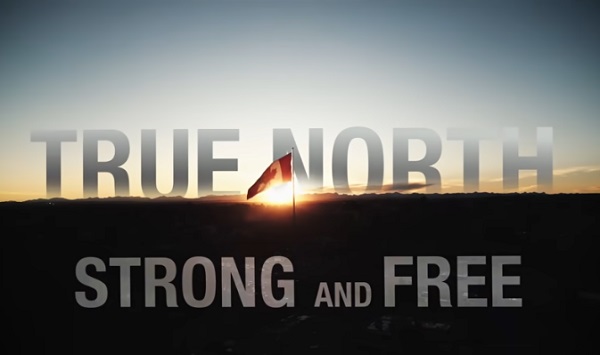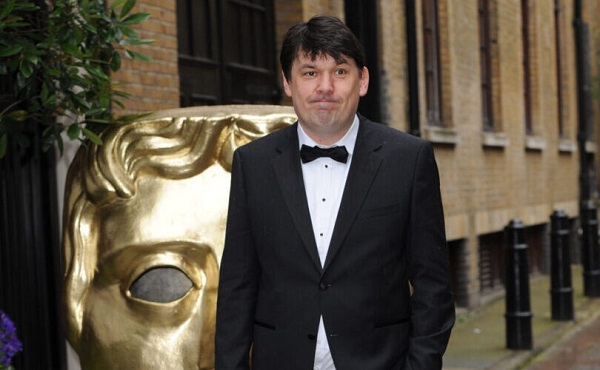Crime
Poilievre calls for an end to Canada’s ‘catch and release’ laws after man dies defending his home

From LifeSiteNews
Conservative leader Pierre Poilievre criticized the Mark Carney government, saying Canadians have the right to defend their homes against criminals
In light of a rash of recent home invasions in Canada, one of which resulted in the death of a 46-year-old father defending his family home, Conservative leader Pierre Poilievre lashed out at Mark Carney’s “catch and release” bail laws, saying they need to be rescinded while adding Canadians have a “right” to defend their homes.
“It has been a show about nothing in Mr. Carney’s government,” Poilievre told reporters.
“But unfortunately, it has been a horror show in our communities,” he added, noting the recent increase in violent home invasions plaguing Canada.
The conservative leader called out the Carney Liberals “catch and release” bail system, saying it’s time those laws, which hail from the Trudeau era, to be removed so that repeat offenders stay in jail.
“Three strikes, you’re out. You commit three violent offenses, you go to jail, and you never get out,” Poilievre said to reporters.
Specifically, Poilievre referenced a fatal home invasion that recently occurred in Waterloo, Ontario, that saw a father of three shot dead in front of his kids and family after his home was invaded.
Public furor over the shooting intensified after York Regional Police Chief Jim MacSween suggested victims of home intruders try not to defend their family and home, saying, “the best defense is to comply.”
Ontario Premier Doug Ford blasted Carney’s catch-and-release laws, blaming the federal government’s policies for the shooting.
“I watch when they catch these guys. I almost guarantee you, they’ve been out on bail for another heinous crime,” he said to reporters.
“The federal government is more worried about going after legal hunters and gun owners than criminals. That’s what they need to do,” he added.
Poilievre calls for ‘Castle Laws’ in Canada
While speaking to reporters, Poilievre blasted the Carney Liberals for their soft-on-crime stance, saying that if Canada wants to “end the Wild West,” it needs to “lock up the criminals and throw away the key.”
“People have a right to defend their home. Your home is your castle,” he said.
“Someone comes into your house and threatens your family, you should have the right to take force against them.”
Poilievre added that should his party ever form government, it would introduce the “Stand on Guard Act,” which he said would strengthen Canada’s self-defense rights and make sure repeat offenders stay in jail.
“Three strikes, you’re out,” he said.
“You commit three violent offenses, you go to jail, and you never get out … “Seniors are afraid to go outside. Parents are afraid to let their children play alone. Canadians are afraid their car might be stolen.”
Earlier this year, Poilievre gained the support of the Toronto Police Association (TPA).
The TPA’s endorsement came after two other large Canadian police unions, the Durham, Ontario, Regional Police Association and the Peel, Ontario, Regional Police Association, backed Poilievre for prime minister, citing his promises to reform Canada’s bail system and to “hold criminals accountable” for their crimes.
Crime
While Canadian police remain hesitant, U.S. Targets Cartels Abroad as Sinaloa’s Reach Spans 40 Nations

DEA leader tells The Bureau that while Trump’s cartel extraditions with Mexico demonstrate significant collaboration, Canadian police remain hesitant partners in the fight against fentanyl networks
The Drug Enforcement Administration says it has dealt a sharp blow to the Sinaloa Cartel — which is embedded in about 40 nations outside Mexico — after a week-long surge of operations across the United States and abroad that netted more than 600 arrests and the seizure of massive quantities of fentanyl, methamphetamine, cocaine, and cash.
From August 25 through August 29, DEA agents in 23 domestic divisions and seven international regions coordinated what officials described as one of the most significant enforcement pushes against the cartel in recent years, the agency announced yesterday.
The operation comes six months after the Trump administration designated the Sinaloa Cartel and seven other groups as foreign terrorist organizations, a move that heightened both legal pressure and political attention on the networks blamed for fueling the U.S. fentanyl crisis.
The crackdown produced 617 arrests, more than $11 million in currency seizures, and 420 firearms, alongside a cache of synthetic and traditional narcotics that investigators say could have fueled untold overdoses nationwide.
The seizures included 480 kilograms of fentanyl powder, more than 714,000 counterfeit pills, 2,200 kilograms of methamphetamine, nearly 7,500 kilograms of cocaine, and over 16 kilograms of heroin.
“Every kilogram of poison seized, every dollar stripped from the cartels, and every arrest we make represents lives saved and communities defended,” Administrator Terrance Cole said. His agency’s statement asserted there are tens of thousands of Sinaloa members, associates, and facilitators operating worldwide — in at least 40 countries — who are responsible for the production, manufacturing, distribution, and operations related to trafficking deadly synthetic drugs.
His predecessor, former DEA chief Derek Maltz, told The Bureau in an exclusive interview that President Trump has achieved unprecedented extraditions from Mexico, bringing dozens of senior cartel leaders into U.S. custody.
Maltz recounted being at Dulles Airport as military flights delivered figures such as Los Zetas bosses Miguel and Omar Treviño and the Sinaloa kingpin Rafael Caro Quintero, wanted for the murder of DEA agent Kiki Camarena. “We’ve never seen that kind of result,” Maltz said, adding: “What’s happening is that we are seeing a drastic reduction in fentanyl seizures at the U.S. southern border. They’re pretty much cut in half over the last several months, which to me is a strong indicator of, number one, the production has gone down. And the cartels are clearly concerned about the optics and the deaths of Americans.”
But alongside the successes on extradition and southern border clampdowns, Maltz said, cartels are adapting. They are now pushing mass shipments of cocaine and synthetic drugs into and through other regions — notably Canada, which retains a geographic advantage for traffickers. Product moves by sea from China and Mexico up the coast into Vancouver, and via Canadian commercial trucks that collect cocaine and methamphetamine shipments from Mexican suppliers in California while also delivering fentanyl precursors from Vancouver to Los Angeles, according to a recent indictment targeting Indo-Canadian Vancouver gangs and Chinese suppliers.
“The cartels are definitely concerned about the optics and the deaths of Americans,” Maltz said. “But they’re not out of business — they’re pivoting to the global cocaine market, and they’re still producing meth in industrial labs.”
On the controversy in Canada — whether superlabs run by Mexican cartels are sending significant amounts of fentanyl or its precursors across the northern border, and whether Canadian police have failed to cooperate with U.S. enforcement, as President Donald Trump has charged — Maltz said Canadian denials ignore the reality of the networks involved.
“First of all, you don’t know what you don’t know. There’s so much wide-open border between Canada and the United States,” he told The Bureau. “I was the guy around 2006 when I ran the Special Operations Division. I invited the RCMP to come in and operate with us because at that time we started seeing massive cocaine movements up the West Coast of the United States into Canada. And we saw at that time gangs like the Hells Angels and others that were doing a lot of the distribution of mass amounts of cocaine for cartels. So we wanted to collaborate with the Mounties.”
Maltz recalled embedding Canadian officers in what became a growing international hub for cross-border enforcement. “We put somebody right in the middle of our synchronization center.”
But progress, he said, has remained halting. “Even when — I think it was February or March with the commissioner of the RCMP and his executive staff — I mean, they were very nice and they were trying to establish relationships again with the DEA. But it’s almost like Groundhog Day. They have to produce results. They have to demonstrate that commitment by action, not by words, not by get-togethers in one of these countries in the embassies and drinking tea or coffee. It’s about action to shut down these cartels. And I haven’t seen a lot of that.”
Crime
A Murder That Says So Much About U.S.

23-year-old Iryna Zarutska—combined with a collage the offender’s fourteen mugshots from his previous arrests
By John Leake
Just before Christmas, 1959, the American novelist, Truman Capote, began researching the true story of the murder of the Clutter family in Holcomb, Kansas on the night of November 15 of that year. As Capote saw it, the murder seemed—in an extremely dramatic way—to express the state of American society at that time.
Capote’s research ultimately led to the publication of In Cold Blood, which many consider the founding book of the true crime genre.
I thought of In Cold Blood when I saw the following images. The first is a still from the surveillance video on a Charlotte, NC light rail train showing a man nonchalantly opening his folding knife to kill the young woman sitting in front of him.
The second image captures the man initiating the fatal attack in which he stabbed the girl three times, including a fatal wound to her neck.
The third image is of the victim—23-year-old Iryna Zarutska—combined with a collage the offender’s fourteen mugshots from his previous arrests.
Iryna, who sought refuge in the United States from the war in Ukraine, was riding the train home from her job as a clerk in a pizzeria.
A society that does such an appalling job of protecting young women cannot be considered civilized or to have retained anything resembling manly virtue. The incident strikes me as a logical outcome in a society in which Marine veteran Daniel Penny was prosecuted for negligent homicide. Penny took action to protect people on a New York City subway from a deranged homeless man who was shouting “I’m gonna kill you” and other threats. Penny put the man in a chokehold that resulted in the man’s death, which sparked a major protest. The protestors believed that death threats do not warrant the use of force—that administering a chokehold is only justified after a violent attack has been initiated.
So far, no protests of the coldblooded murder of the innocent and unsuspecting girl. Of all major newspapers, only the New York Post has reported the incident, which is such a shameful horror show as to be almost beyond belief.
It seems the other major newspapers don’t consider the slaughter of a young woman on a public train to be newsworthy.
Author’s Note: If you are a regular reader of my reporting and analysis, please consider becoming a paid Subscriber to our Focal Points newsletter.
For just $5.00 per month, you can support us in effort to ascertain and report the truth of what is going on in our world. Many thanks! John Leake
-

 Censorship Industrial Complex1 day ago
Censorship Industrial Complex1 day agoCanadian gov’t claims privacy provision in online censorship bill was “accidentally” removed
-

 Bruce Dowbiggin1 day ago
Bruce Dowbiggin1 day agoMic Drop: The Thought Police Are Coming To Take You Away
-

 Censorship Industrial Complex1 day ago
Censorship Industrial Complex1 day agoFreedom of speech under threat on university campuses in Canada
-

 Business2 days ago
Business2 days agoCarney engaging in Orwellian doublethink with federal budget rhetoric
-

 Business1 day ago
Business1 day agoCourt’s ‘Aboriginal title’ ruling further damages B.C.’s investment climate
-

 Business1 day ago
Business1 day agoManitoba Must Act Now To Develop Its Northern Ports
-

 Alberta1 day ago
Alberta1 day agoOttawa’s destructive federal energy policies and Premier Danielle Smith’s three part solution
-

 Crime1 day ago
Crime1 day agoA Murder That Says So Much About U.S.











